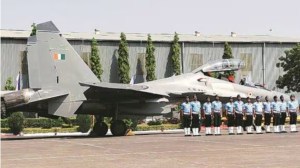Core sector growth lags behind demand
February 24: The Economic Survey (1998-99) tabled in Parliament today said lack of private investment in the infrastructure sector at the...

February 24: The Economic Survey (1998-99) tabled in Parliament today said lack of private investment in the infrastructure sector at the level required to build a vibrant economy was responsible for a dull growth of the sector. The Survey points out that the demand for infrastructure services continued to outstrip the supply putting severe pressure on the infrastructure.
The sector continued to be at the mercy of budgetary allocations for its performance. This dependence on budgetary support is responsible for delays in the implementation of the projects either due to paucity of funds or due to procedural delays. These, in turn, often lead to massive cost and time overruns in projects.
The Survey also points out that for the infrastructure growth to achieve a level of 8 per cent of the GDP by 2005-06 from the current level of 5.5 per cent, substantial private investment will have to be invited into the sector. This will only be possible if the operations can recover returns on the basis of commercialuser charges to make the projects viable.
Power
:
On the power sector, the Survey has stated that power generation managed to hold its own showing a modest growth of 6.1 per cent in 1997-98 over the 1996-97 level. The growth was mainly due to the significant spurt in the hydro sector growth.
This performance is, however, undermined by the fact that the transmission and distribution (T&D) losses, already very high compared to an international average of 10 per cent, crept up to 23.4 per cent from 22.3 per cent in 1996-97. The Survey notes that the hidden subsidy in the power sector touched an abominable high of Rs 24,257 crore in 1997-98 from its level of Rs 7,248 crore in 1991-92. This subsidy is estimated to touch an alarming level of Rs 31,205 crore by 1999-2000.
Telecommunications
The Survey has taken note of the serious shortfall in the setting up of village public telephones (VPT) in the country. It points out that originally the National Telecom Policy (NTP) of 1994 hadenvisaged putting up of a VPT in each of the 6.07 lakh villages in the country. The target has now been pushed back to be achieved by the end of the Ninth Plan period. So far only 3.04 lakh villages have been covered.
Road Transport
The Survey points out the measure of liberalisation in the road sector with automatic approval for foreign equity participation up to 100 per cent in the construction of roads and bridges. But it is provided that total equity participation in any such project should not exceed Rs 1,500 crore. A model concession agreement for Build-Operate-Transfer (BOT) projects has been finalised. However, the survey paints grim picture of the existing road sector in the country while talking about the ambitious highway projects announced during the year.
Ports
According to the Survey, the existing port infrastructure is insufficient to handle trade flows effectively. As against the total capacity of 218 million tonnes on March 31, 1998, the 11 major ports in the countryhandled 251.5 million tonnes as of end-March, 1998, resulting in delays and longer ship turnaround time.
There has been a slow growth in the handling capacity of the ports. This has been mainly due to the fall in the export of iron ore and also in import of fertilisers and its raw materials.
Railways
The Survey is of the view that there is scope for raising internal resources in the cash-starved Railways through tariff adjustments, that is, by increasing the passenger fares. The Railways, as a public utility service, is anyway operating unremunerative lines.
The losses incurred by Railways are being met through cross-subsidisation in the freight business. But as a result the Railways lost large amount of its freight business to the road sector.
Efforts are now being made to contain this unsustainable trend and reduce the element of cross-subsidisation hile conducting freight business in a more customer friendly and growth oriented manner.





- 01
- 02
- 03
- 04
- 05

























